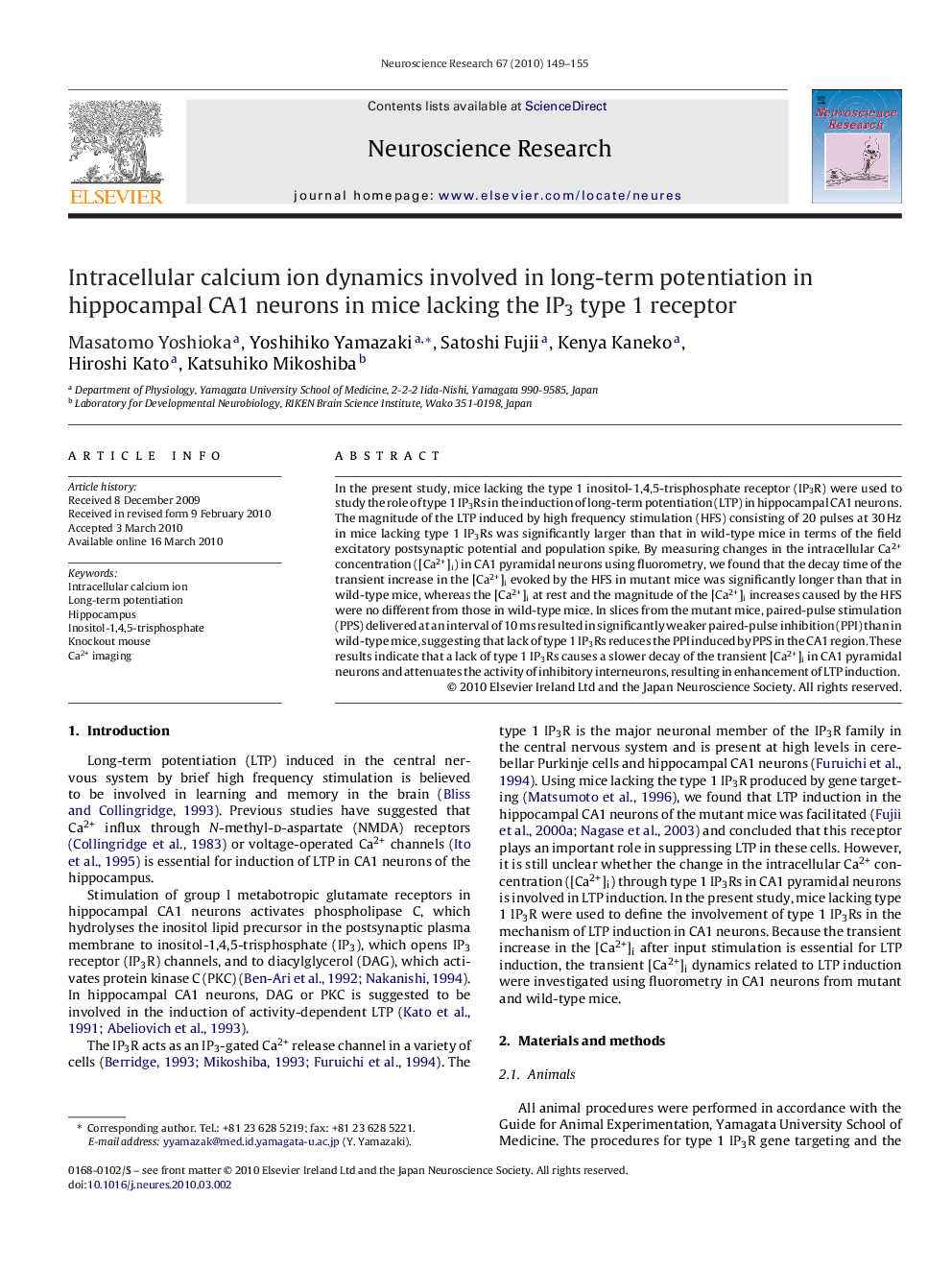| Article ID | Journal | Published Year | Pages | File Type |
|---|---|---|---|---|
| 4352243 | Neuroscience Research | 2010 | 7 Pages |
Abstract
In the present study, mice lacking the type 1 inositol-1,4,5-trisphosphate receptor (IP3R) were used to study the role of type 1 IP3Rs in the induction of long-term potentiation (LTP) in hippocampal CA1 neurons. The magnitude of the LTP induced by high frequency stimulation (HFS) consisting of 20 pulses at 30Â Hz in mice lacking type 1 IP3Rs was significantly larger than that in wild-type mice in terms of the field excitatory postsynaptic potential and population spike. By measuring changes in the intracellular Ca2+ concentration ([Ca2+]i) in CA1 pyramidal neurons using fluorometry, we found that the decay time of the transient increase in the [Ca2+]i evoked by the HFS in mutant mice was significantly longer than that in wild-type mice, whereas the [Ca2+]i at rest and the magnitude of the [Ca2+]i increases caused by the HFS were no different from those in wild-type mice. In slices from the mutant mice, paired-pulse stimulation (PPS) delivered at an interval of 10Â ms resulted in significantly weaker paired-pulse inhibition (PPI) than in wild-type mice, suggesting that lack of type 1 IP3Rs reduces the PPI induced by PPS in the CA1 region. These results indicate that a lack of type 1 IP3Rs causes a slower decay of the transient [Ca2+]i in CA1 pyramidal neurons and attenuates the activity of inhibitory interneurons, resulting in enhancement of LTP induction.
Keywords
Related Topics
Life Sciences
Neuroscience
Neuroscience (General)
Authors
Masatomo Yoshioka, Yoshihiko Yamazaki, Satoshi Fujii, Kenya Kaneko, Hiroshi Kato, Katsuhiko Mikoshiba,
